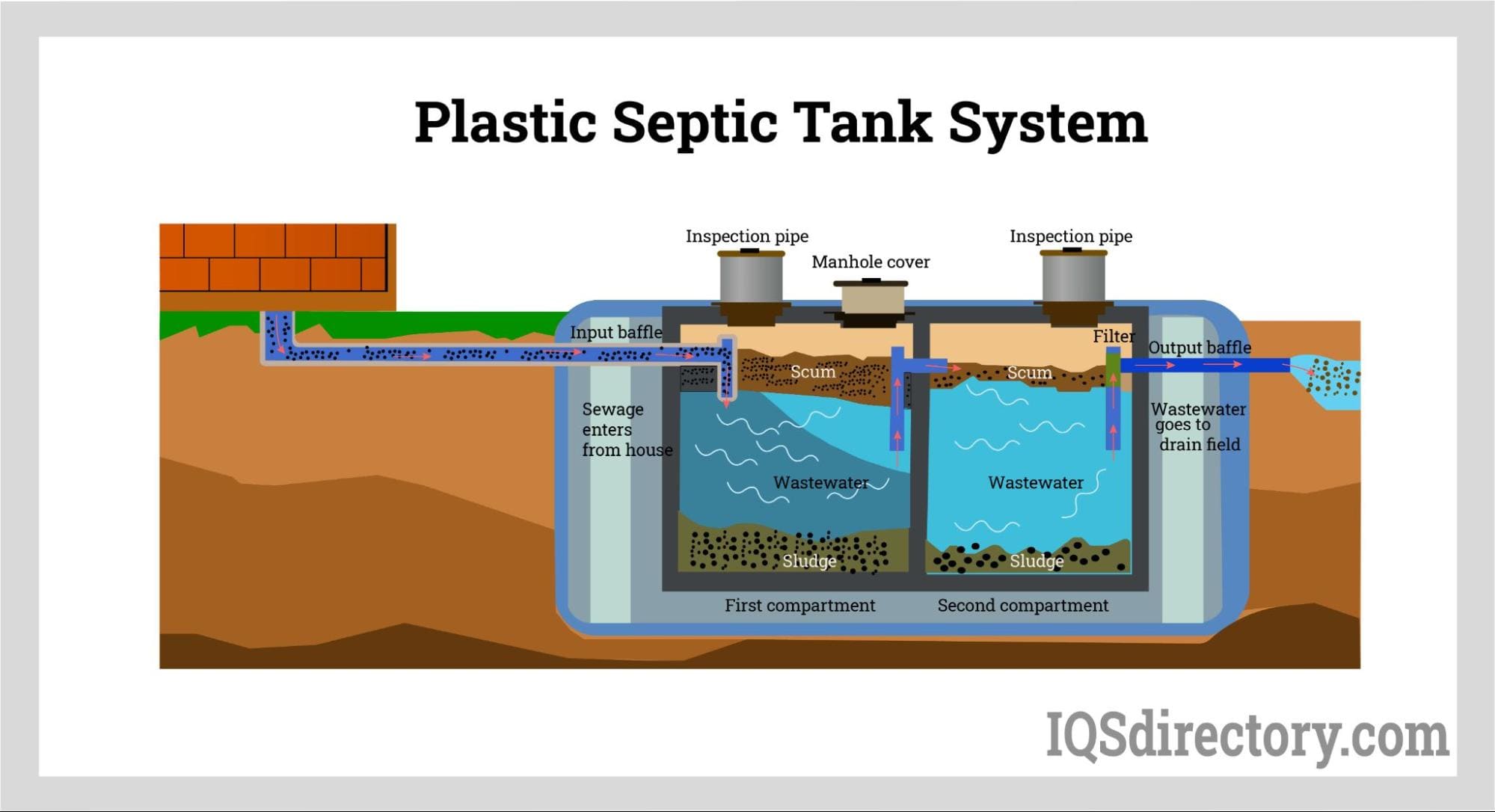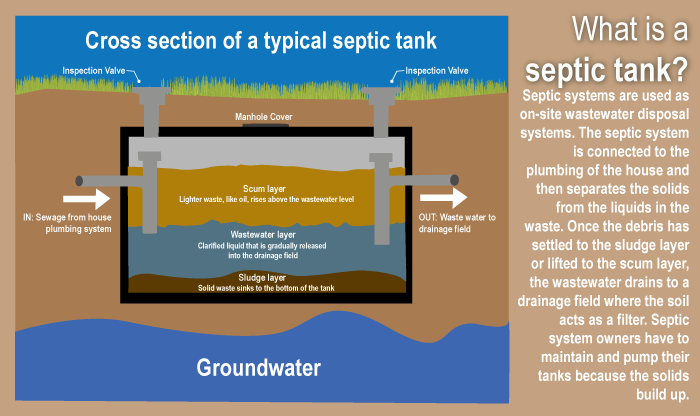Affordable Septic Tank Pumping Solutions: Avoiding Expensive Fixes
Wiki Article
Decoding the Language of Septic System Services: A Reference of Terms for Clear Interaction and Recognizing
Are you perplexed by the jargon used in sewage-disposal tank services? Do not fret, we've obtained you covered! In this write-up, we'll assist you decode the language of septic tank solutions with a handy glossary of terms. From recognizing the essentials of your septic storage tank to handling sludge accumulation, we'll provide clear explanations to ensure clear interaction and understanding. Bid farewell to complication and hello there to a well-kept septic tank!Sewage-disposal Tank: Comprehending the Essentials

If you are strange with septic systems, they are below ground containers that hold and deal with wastewater from your home. These storage tanks are a crucial part of your home's plumbing system, liable for safely and efficiently handling the waste produced by your day-to-day activities. Recognizing the essentials of septic containers is crucial in order to guarantee their proper functionality and prevent pricey fixings.
A septic container contains two major parts: the tank itself and the drainfield. The storage tank is where the wastewater streams right into, and it is developed to divide solids from liquids. The solids clear up at the base of the container, creating a layer of sludge, while the fluids, referred to as effluent, rise to the top. The effluent after that streams right into the drainfield, where it is more dealt with and distributed into the surrounding dirt.
Normal maintenance of your sewage-disposal tank is crucial to protect against concerns such as clogs, back-ups, and system failings. It is recommended to have your storage tank pumped every 3 to 5 years, depending on its dimension and use. In addition, it is essential to be conscious of what you purge down the drains pipes and commodes, as particular chemicals and materials can damage the microbial balance in the storage tank.
Drain Area: The Duty of Dirt in Garbage Disposal
To preserve the proper capability of your septic system system, it is crucial to recognize the duty of the drainpipe field in waste disposal and exactly how the bordering soil plays a crucial role in this procedure. The drainpipe field, likewise called the leach field or absorption area, is an essential component of a septic tank. Its primary feature is to filter and deal with the wastewater that streams out of the sewage-disposal tank.Once the wastewater leaves the septic system, it is dispersed equally throughout the drain field via a network of pipelines or trenches. The drainpipe field contains a layer of gravel or rock, which aids to distribute the wastewater evenly and promote efficient purification. Below the gravel layer, there is a layer of soil that functions as a natural filter.
The soil in the drainpipe area plays an essential role in the therapy of wastewater. As the wastewater percolates through the dirt, it undertakes an all-natural procedure of filtration and filtration. The soil functions as a organic and physical filter, removing dangerous microorganisms, viruses, and other contaminants from the wastewater.
The structure and high quality of the soil are important for the reliable functioning of the drain field - septic tank pumping. The dirt ought to have excellent percolation rates to allow the wastewater to relocate through it easily. Furthermore, the dirt should have adequate oxygen levels to support the development of cardio germs, which investigate this site aid in the breakdown of natural issue in the wastewater

Effluent: the Fluid Waste From Your Septic System
As the wastewater leaves the drain area, it is called effluent, and it is very important to recognize the qualities and management of this liquid waste from your septic tank. Effluent is the term made use of to explain the cured wastewater that drains of your septic storage tank and into the drainpipe field. septic tank pumping. This fluid waste has a combination of water, natural matter, and dissolved solidsEffluent need to resource be clear and totally free of any undesirable odors. It might be an indication of a problem with your septic system if you discover any kind of nasty smells or staining. Routine maintenance and pumping of your septic system can aid make certain that the effluent continues to be complimentary and tidy from contaminants.
Appropriate administration of effluent is critical to avoid contamination of the surrounding atmosphere. The find more information drainpipe field is designed to filter and deal with the effluent before it goes into the soil. It is necessary to avoid any kind of tasks that might potentially damage the drainpipe field, such as parking lorries or growing trees with deep origin systems.
Sludge: Handling Strong Waste Accumulation
When managing solid waste buildup in your septic tank, correct monitoring of sludge is vital. Sludge describes the thick layer of strong waste that builds up at the base of your septic system in time. Otherwise managed properly, sludge can trigger numerous problems, such as blocking, back-ups, and even system failure.Regular maintenance is essential to avoid sludge buildup. It is suggested to have your sewage-disposal tank pumped every three to five years, relying on the dimension of your house and the storage tank's capability. Pumping removes the gathered sludge, enabling your septic system to function efficiently.
Along with regular pumping, there are a couple of actions you can require to minimize sludge build-up. Be mindful of what you purge down the drainpipe. Prevent disposing of non-biodegradable items, such as paper towels, baby diapers, and hygienic items. These can add to sludge accumulation. Second, consider using septic-safe products that won't interfere with the all-natural bacterial balance in your system.
Pumping: Maintaining the Health of Your Septic Storage Tank
Keep the health and wellness of your septic container by consistently pumping it. Over time, strong waste and sludge accumulate in the container, which can lead to clogs, backups, and even system failure.Regular pumping is suggested to avoid the sludge from getting to high levels. The frequency of pumping depends upon various elements such as the size of the container, the variety of passengers in your home, and the usage of water. On standard, septic tanks must be pumped every three to five years. It's vital to keep in mind that every system is distinct, and it's best to seek advice from with an expert to establish the ideal pumping schedule for your details scenario.
Verdict
So there you have it: a convenient glossary of terms to assist you better comprehend the language of sewage-disposal tank services. Whether it's discovering the basics of sewage-disposal tanks, recognizing the function of the drain area, or understanding how to take care of sludge buildup, this reference will certainly make certain clear communication and a far better understanding of your septic tank. Maintain these terms in mind to preserve the wellness and capability of your sewage-disposal tank.A septic storage tank consists of 2 primary parts: the tank itself and the drainfield.Regular maintenance of your septic container is vital to protect against concerns such as blockages, backups, and system failures.To preserve the appropriate capability of your septic storage tank system, it is essential to recognize the role of the drainpipe area in waste disposal and just how the surrounding dirt plays a vital role in this procedure. It is advised to have your septic tank pumped every 3 to five years, depending on the size of your family and the storage tank's ability. Whether it's learning concerning the fundamentals of septic containers, recognizing the role of the drain area, or recognizing how to deal with sludge buildup, this glossary will certainly guarantee clear communication and a far better understanding of your septic system.
Report this wiki page